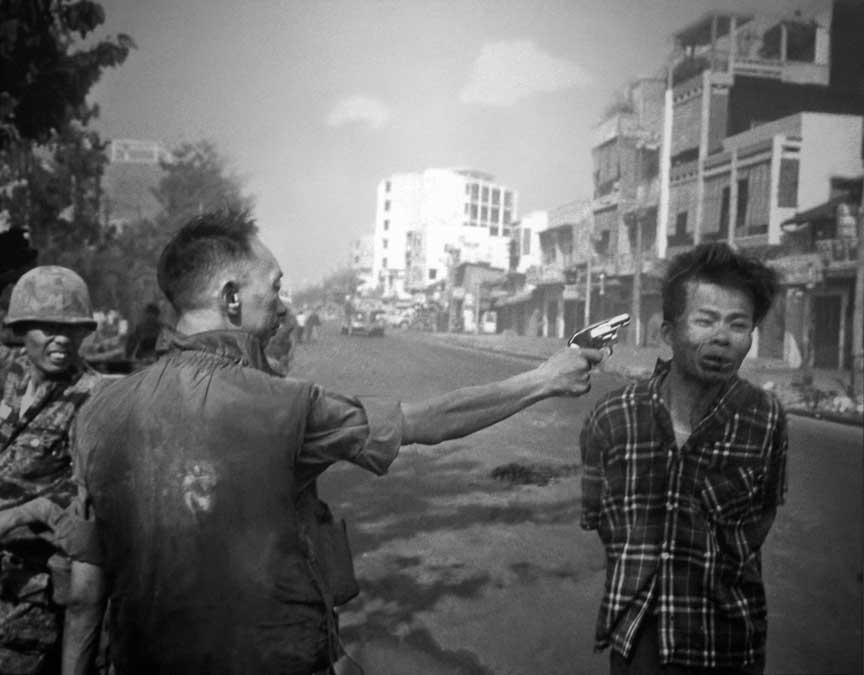January 30th 1968
Tet Offensive
By Eddie Adams Tet Offensive
On the inaugural day of the Tet (Lunar New Year) truce, the Viet Cong launched their most extensive offensive of the conflict. Approximately one thousand Viet Cong troops infiltrated the city of Saigon. The Communist troops captured the Citadel at Hue and seized a portion of the U.S. embassy in Saigon. It required nearly two weeks to completely eliminate the Viet Cong troops. The assault constituted a military calamity for the Communists, resulting in over 10,000 casualties and the failure to secure any of their objectives. Nevertheless, the offensive marked a strategic triumph for the Viet Cong. For numerous Americans who had harbored the belief that the war was in the process of being won, the sight of Viet Cong troops holding the U.S. embassy served as a jarring awakening and compelled them to reassess the U.S. “true” position. .
After years of the same images of the war, on January 31st, a completely different image would fill their screens. While ultimately the communist offensive known as the Tet Offensive would be a military failure, its strategic impact occurred in the homes of Americans.
The communist had pledged to maintain a ceasefire during Tet, the lunar New Year, but in fact, seventy thousand communist troops attacked 100 cities and bases throughout the country. The war had until now been fought primarily in the rural areas of the country, but now the communist changed the terms of the battle. They attempted to attack the coastal city of Nhatrang, as well as the cities of How An, Danag, and Quinhon. They attacked most of the provincial capitals and attempted to surge into the Mekong Delta.
They reserved their largest attacks for the Saigon area. They attacked the US Embassy, managing to breach it before being killed by Americans on the scene. The communist also captured the radio station and had planned to broadcast that they had captured the city, but the capture automatically cut them off from the broadcast tower. South Vietnamese troops surrounded them, and the communists eventually blew up the station.
One of the most iconic photographs of the war was taken the following day by Eddie Adams, who captured General Nguyen Ngoc Loan shooting a prisoner in the street.
The bloodiest battle of the war took place after the communist captured Hue. American and South Vietnamese troops recaptured the city, but not before the communist killed 3,000 South Vietnamese supporters of the regime.
When the offensive concluded, approximately 2,000 Americans, 4,000 South Vietnamese, and as many as 50,000 communist soldiers lay dead. The most significant impact was back in the United States. There, the American people had been led to believe that the war was about to be won, but the images from the streets of South Vietnam presented a vastly different reality.
 >
>